The first marble slabs have begun installation on the curved central wall of Santiago Calatrava‘s St. Nicholas Greek Orthodox Church in the Financial District. Located by the intersection of Greenwich Street and Liberty Street on the elevated Liberty Park, the structure will serve as the new home for the long-established church that was formerly located to the west of the park’s footprint at 155 Cedar Street. The Port Authority of New York and New Jersey is developing the project, which sits directly to the south of the original 16-acre World Trade Center complex and rests above the subterranean ramps and southern entrance to the Vehicle Security Center.
Recent photographs show the marble façade following the wide geometrically pleated structural frame that makes up the curved edges of the church. Vertical metal strips are now also attached to the northeastern corner that will hold up additional slabs. This entire side of the edifice sits mostly in the shade year round, except for a handful of days in the early summer in the late morning and sunset hours, so we’ll have to wait until the marble walls go up on the other three sides to see how bright they shine in the sunlight. Each slabs appears to be finished with an off-white tone with a fairly even color distribution and subtle veining.
Meanwhile, a couple of the skylight panels were spotted covered in thin black 3M film. These will let natural light into the interior space below, but for now this section of the dome will remain covered until more of the church progresses.
Other work awaiting completion in Liberty Park includes a final set of staircases against the northern profile of Caltrava’s Church. Renderings show an arched cutout below with a doorway that might lead visitors underneath the church, possibly to an elevator for more direct ADA-compliant accessibility than the long ramps on the eastern edge of Liberty Park to the main doors.
Santiago Calatrava’s architectural concept for the church was inspired by Istanbul’s Hagia Sophia and Church of the Holy Savior of Chora. A painting of Jesus Christ will adorn the underside of the dome’s highest point.
No finalized completion date has been announced for the church, though banners on the construction fence read “Coming 2021.”
Subscribe to YIMBY’s daily e-mail
Follow YIMBYgram for real-time photo updates
Like YIMBY on Facebook
Follow YIMBY’s Twitter for the latest in YIMBYnews

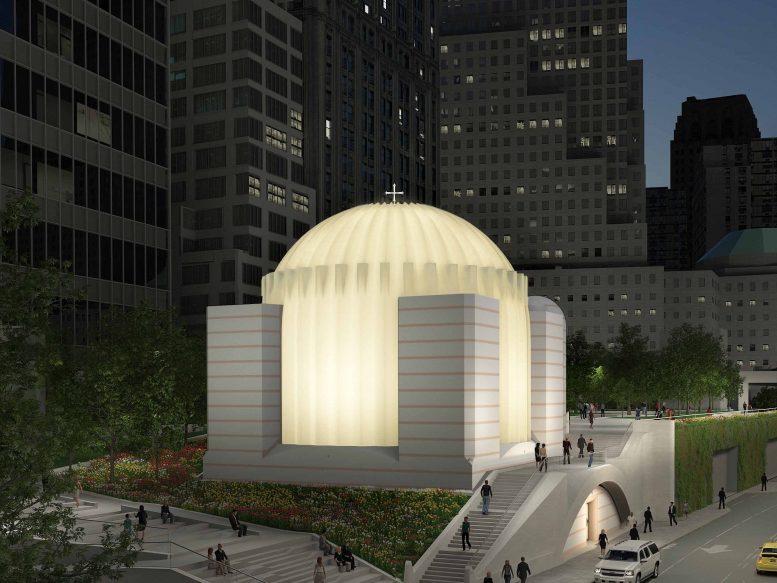

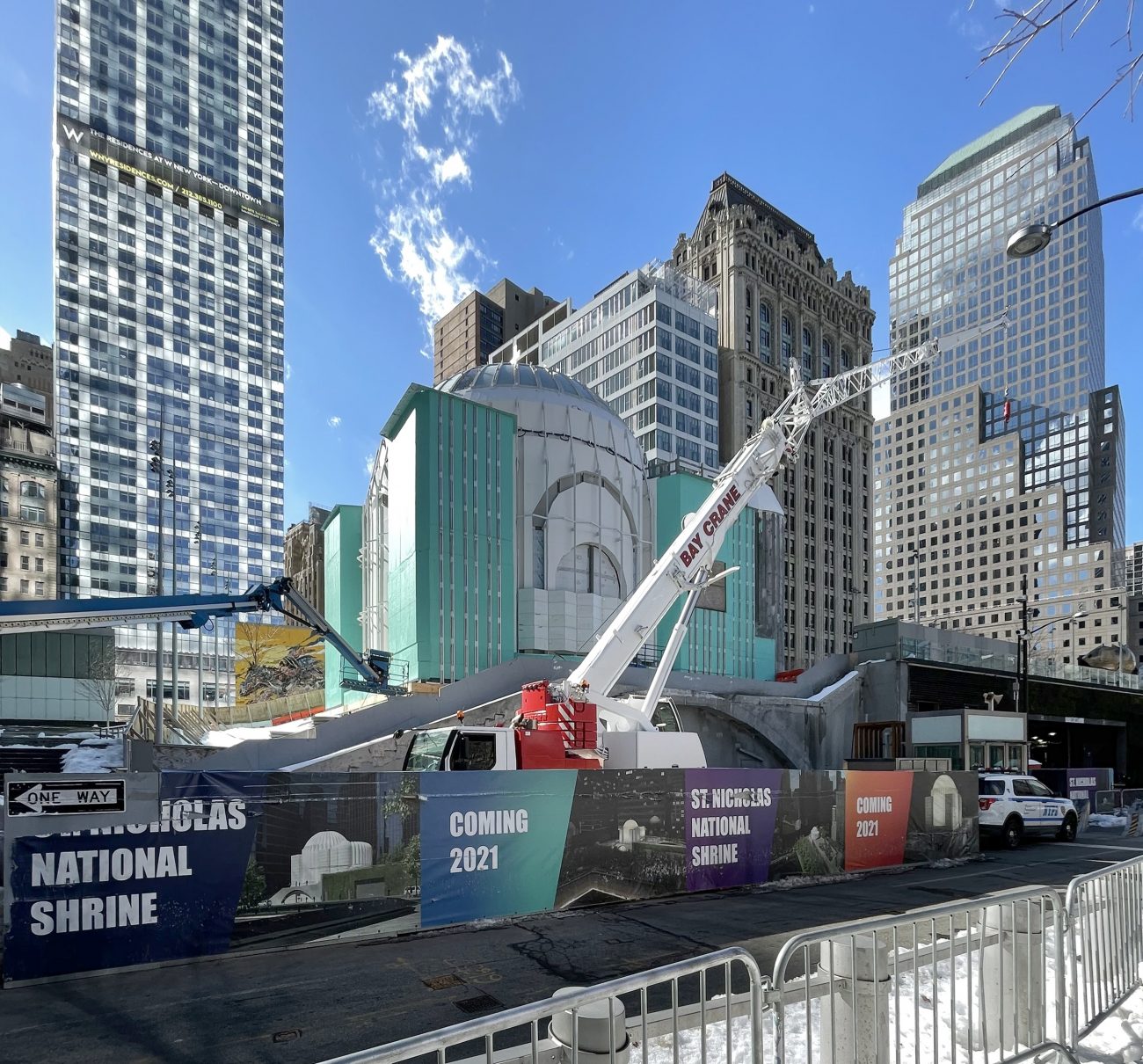
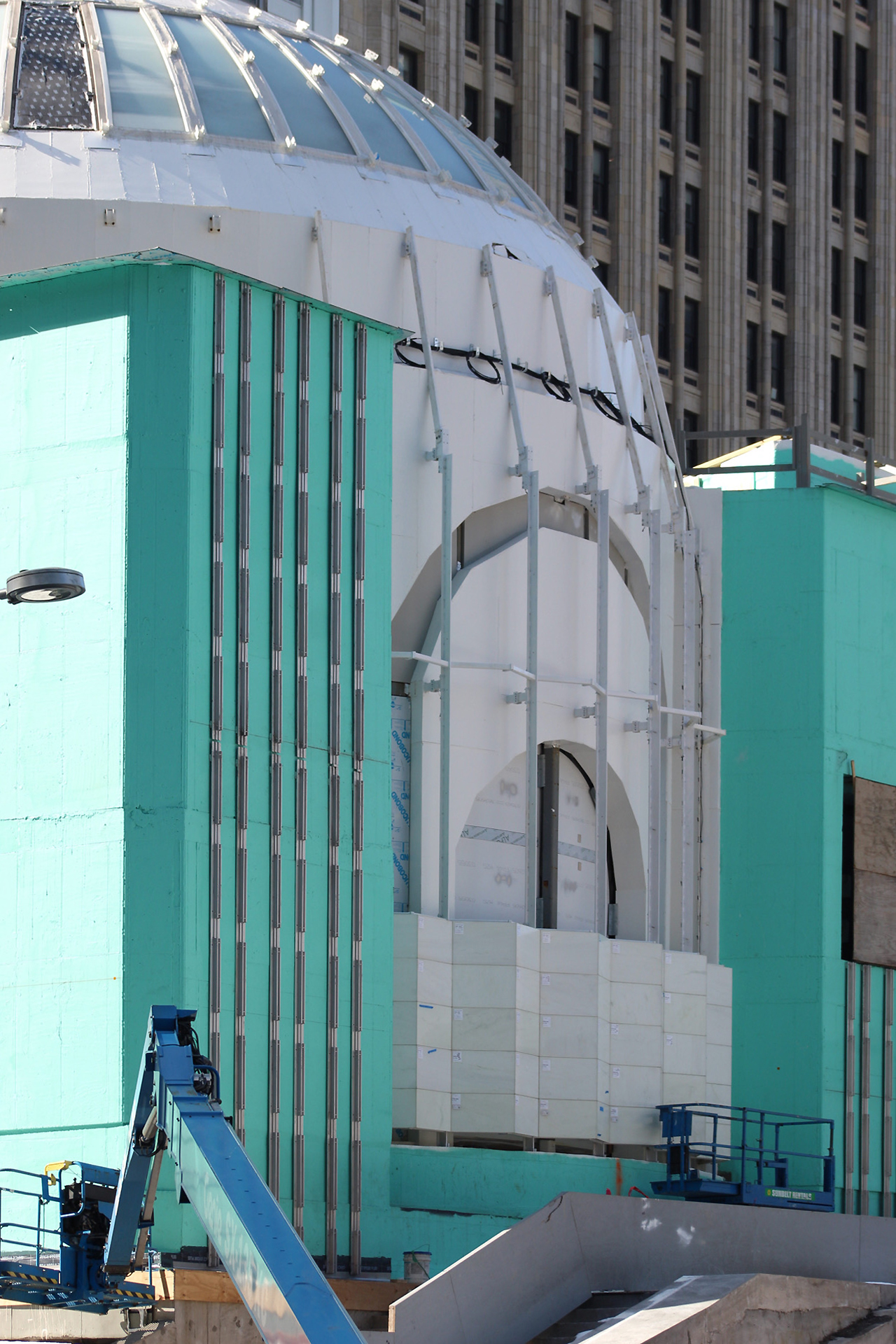
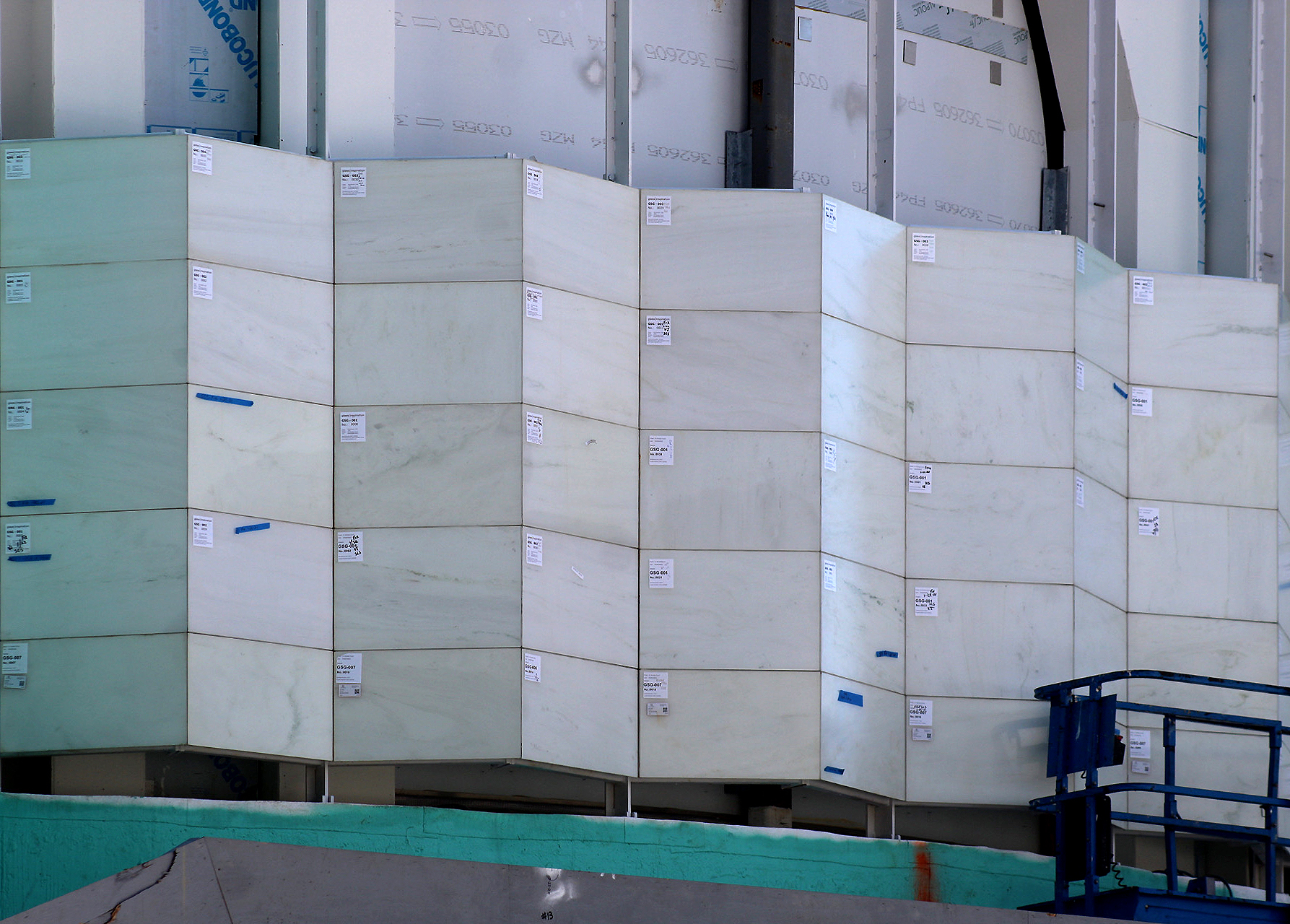
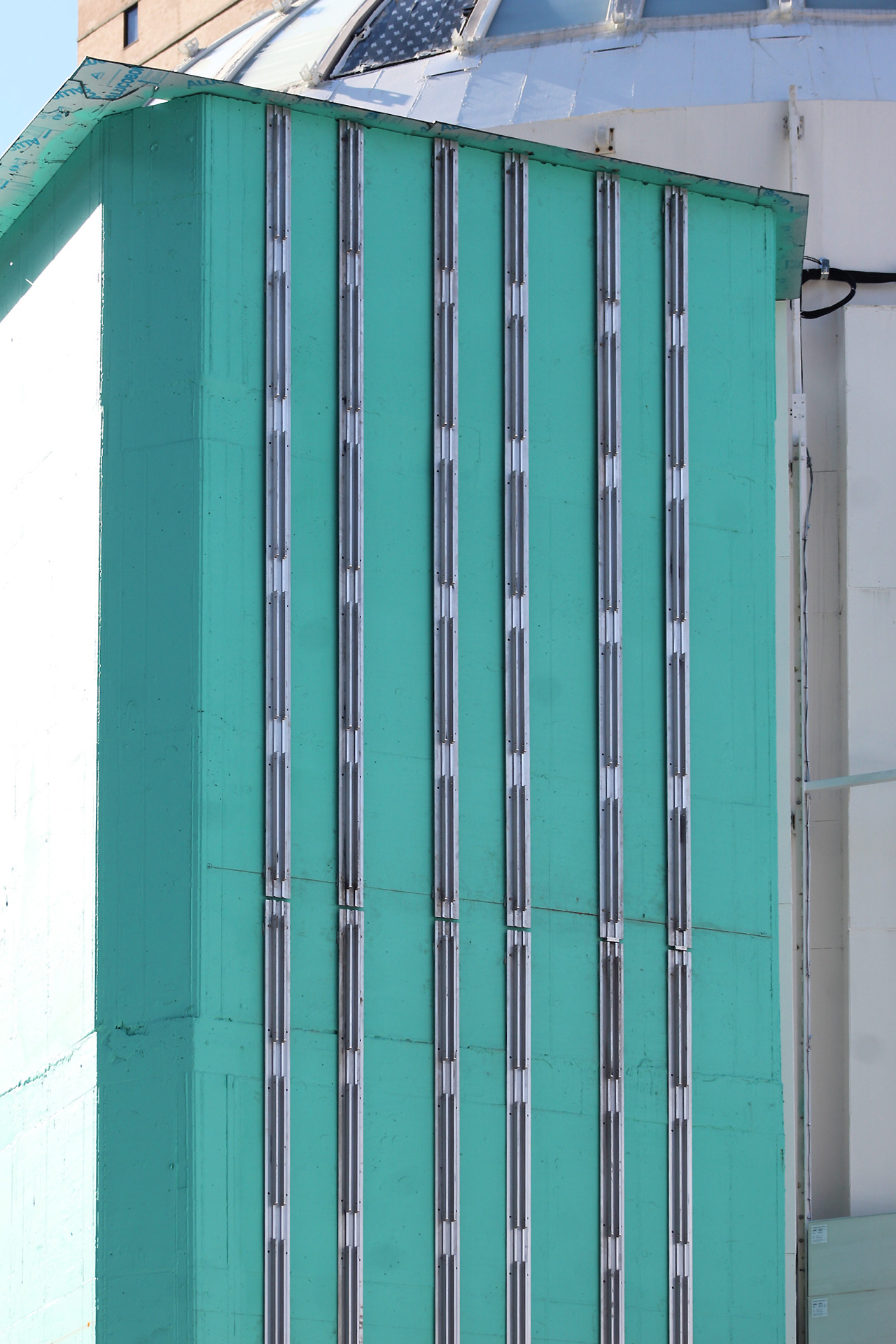
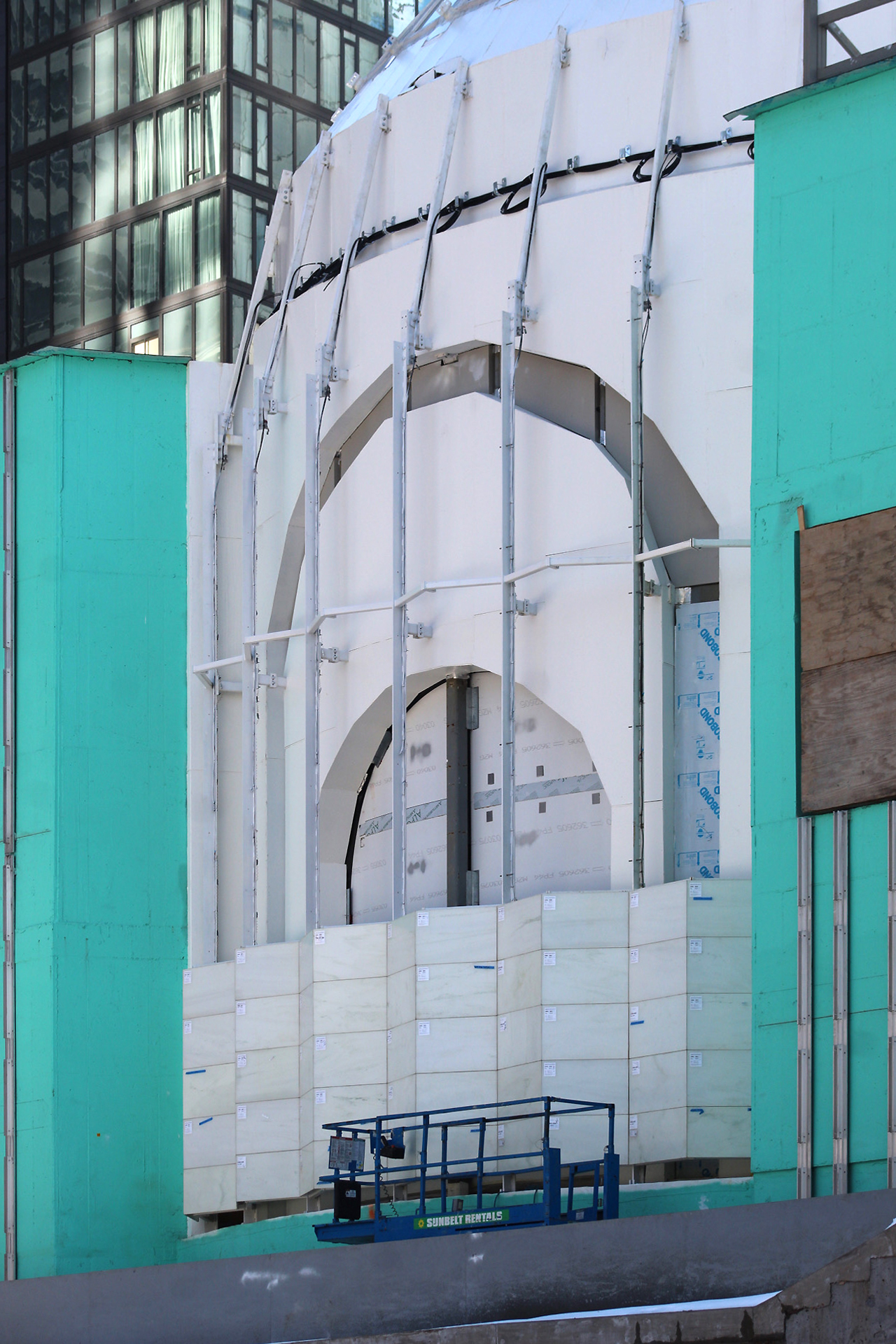
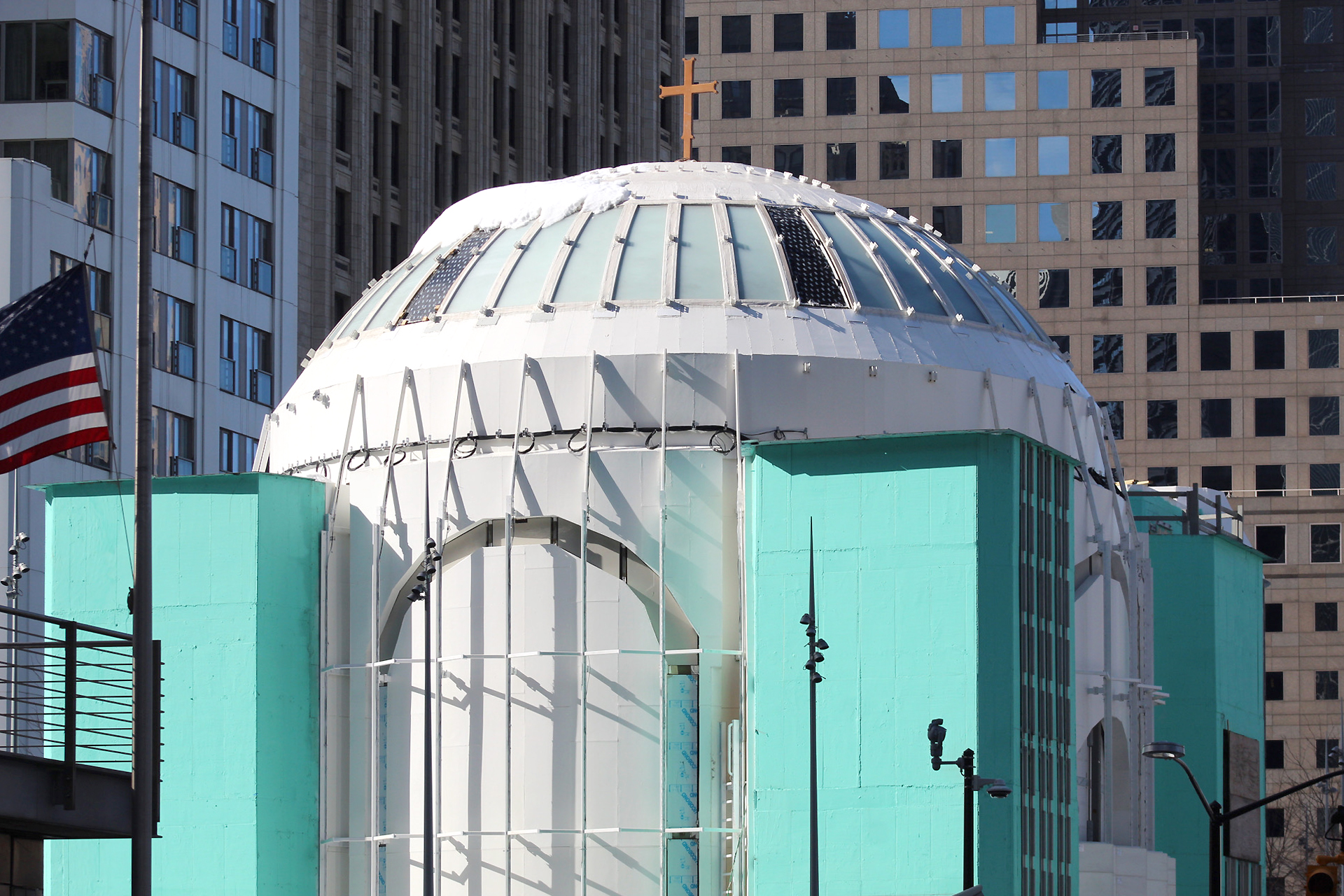
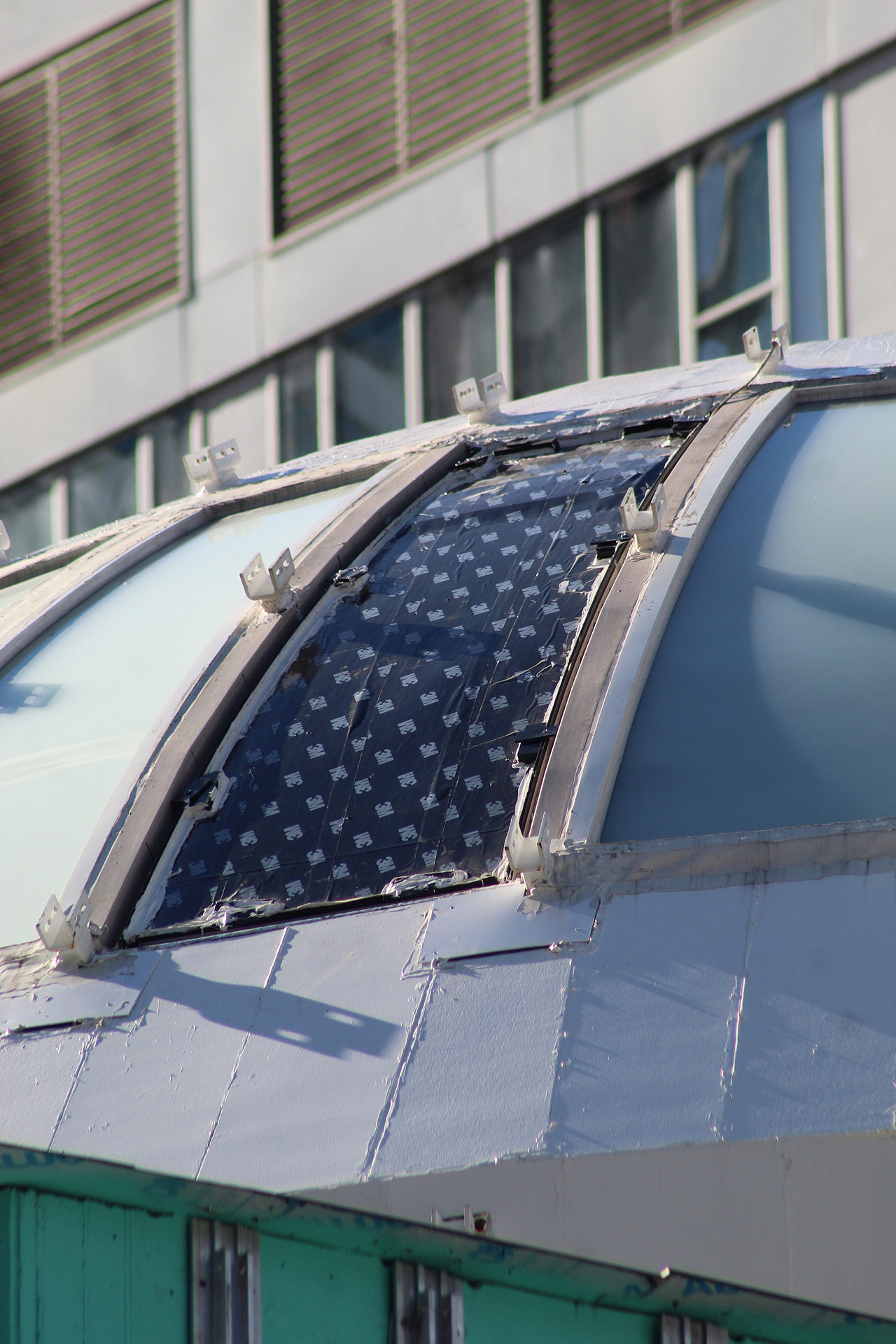

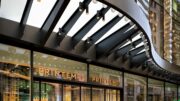

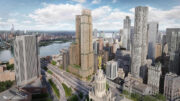
There is ceremonious on the structure’s progress, and causing my thought to peaceful: Thanks to New York YIMBY.
One of the few positive aspects of Islam is that cults preference for stunning, intricate graphic designs/colors. This type of architecture and design is very beautiful and peaceful. It is refreshing to see this Islamic style enhancing a Greek Orthodox Christian religious structure.
The hideous, macabre idolatry/demons and gore of my childhood Catholic brainwashing ‘places of worship’ always repulsed me and made even my young self unable to comprehend the rabid ‘papal bull’ that the ‘Roman’ Catholics were somehow civilized and morally superior compared the other pagan religions.
Islam is not a “cult”. Sorry to hear about your scarred childhood, but, really? This a comment board about ARCHITECTURE, not your sad religious indoctrination.
what are you on?
Wow. Severely damaged. Sad.
Has your neighbors barking dog been telling you to do things?
It’s a glorified bunker. Calatrava’s money pit at least has aesthetic merit, this thing is just a hideous waste of space. Sorry to say but the terrorists have won.
Never has, “Let’s hope ( and pray ) that this all comes together” been more appropriate than here.
What a beautiful church!!
A star on Ground Zero from a star like Santiago Calatrava.
Congratulation!
I have Been there. Wonderful!
This is a toy, a toy on a splendid plaza, a carbuncle on the Center. Here is a timid structure and a lost opportunity.
The St. Nicholas Greek Orthodox Church continues! This is definitely not among my favorite World Trade Center structures, but I still quite like it. I still have great memory and a few photos of this building from when I was last at the WTC. Man, do I miss that.
The original church was destroyed on 9/11.
The church name, St. Nicholas, is the patron saint of travelers.
Tell that to the people who were on those planes.
People keep believing even when there’s proof that it’s all nonsense.
But will there be a large enough congregation to sustain this church going forward?
This elegant building is proof that Calatrava can work in a low-key, respectful style as well or better than he does with showy structurd like the PATH Transit Center & Mall. (I refuse to call it “The Oculus,” since that’s an ancient architectural term referring to a circular opening and which makes NO SENSE applied to a whole building.)
My favorite part here is the ground level entrance to the St. Nicholas church, ‘under’ the stairs.
Something you might find interesting about these marble slabs:
“The building’s most distinct feature is the marble curtain wall, which comes from the same vein of Pentelic Marble that built the Parthenon 2,500 years ago. It was a gift from the Greek Government”.
The church is clearly inspired by classic Byzantine architecture…the predecessor to the structure of a mosque. As such it harkens to ancient churches such as Haghia Sophia in Constantinople. The design is timeless, clearly modern but with ancient roots, like the Orthodox Chuch itself.